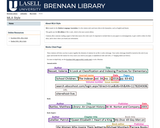
A basic guide to the most common uses of MLA style, including color-coded example citations.
- Subject:
- Composition and Rhetoric
- English Language Arts
- Material Type:
- Student Guide
- Author:
- Sophie Forrester
- Date Added:
- 08/10/2020

A basic guide to the most common uses of MLA style, including color-coded example citations.

The Mathematics Vision Project (MVP) curriculum has been developed to realize the vision and goals of the New Core Standards of Mathematics. The Comprehensive Mathematics Instruction (CMI) framework is an integral part of the materials. You can read more about the CMI framework in the Utah Mathematics Teacher Journal. (UCTM, 2009)
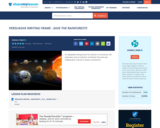
An adaptable writing frame for teacher to comments; self evaluation and an indicator of whether the work was independent, shared or teacher assisted etc.

PhD Science Grade Levels K–2 is available as downloadable PDFs. The OER consists of Teacher Editions and student Science Logbooks for every module.
With PhD Science®, students explore science concepts through authentic phenomena and events—not fabricated versions—so students build concrete knowledge and solve real-world problems. Students drive the learning by asking questions, gathering evidence, developing models, and constructing explanations to demonstrate the new knowledge they’ve acquired. The coherent design of the curriculum across lessons, modules, and grade levels helps students use the concepts they’ve learned to build a deep understanding of science and set a firm foundation they’ll build on for years to come.
Cross-curricular connections are a core component within PhD Science. As an example, every module incorporates authentic texts and fine art to build knowledge and create additional accessible entry points to the topic of study.
Three-dimensional teaching and learning are at the heart of the curriculum. As students uncover Disciplinary Core Ideas by engaging in Science and Engineering Practices and applying the lens of Cross-Cutting Concepts, they move from reading about science to doing science.
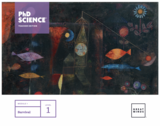
Throughout the module, students study the anchor phenomenon, life at a pond, and build an answer to the Essential Question: How do pond plants and pond animals survive in their environment? As students learn about each new concept, they revisit and refine a model that represents how plants and animals survive in a pond environment. At the end of the module, students use their knowledge of the ways plants and animals survive to explain the anchor phenomenon, and they apply these concepts to a new context in an End-of-Module Assessment. Through these experiences, students develop an enduring understanding that plants and animals have body parts that function in ways that help the plants and animals survive in their environment. Students also develop the understanding that plants and animals of the same kind are recognizable as similar but can vary in many ways and that many animal parents engage in behaviors that help young offspring survive.
With PhD Science®, students explore science concepts through authentic phenomena and events—not fabricated versions—so students build concrete knowledge and solve real-world problems. Students drive the learning by asking questions, gathering evidence, developing models, and constructing explanations to demonstrate the new knowledge they’ve acquired. The coherent design of the curriculum across lessons, modules, and grade levels helps students use the concepts they’ve learned to build a deep understanding of science and set a firm foundation they’ll build on for years to come.
Cross-curricular connections are a core component within PhD Science. As an example, every module incorporates authentic texts and fine art to build knowledge and create additional accessible entry points to the topic of study.
Three-dimensional teaching and learning are at the heart of the curriculum. As students uncover Disciplinary Core Ideas by engaging in Science and Engineering Practices and applying the lens of Cross-Cutting Concepts, they move from reading about science to doing science.
© 2020–2022 Great Minds PBC. Except where otherwise noted, this content is published under Great Minds OER License 1 (greatminds.org/gm_oer_1). Use limited to noncommercial educational purposes. COMMERCIAL REPRODUCTION PROHIBITED.

Throughout this module, students study the anchor phenomenon, wayang shadow puppetry, and build an answer to the Essential Question: How do puppeteers use light to tell stories during wayang shows? As students learn about each new concept, they revisit and refine a model that shows how light interacts with the parts of a wayang show. At the end of the module, students use their knowledge of light interactions to explain the anchor phenomenon, and they apply these concepts to a new context in an End-of-Module Assessment. Through these experiences, students develop an enduring understanding that the way light interacts with objects affects what people see.
With PhD Science®, students explore science concepts through authentic phenomena and events—not fabricated versions—so students build concrete knowledge and solve real-world problems. Students drive the learning by asking questions, gathering evidence, developing models, and constructing explanations to demonstrate the new knowledge they’ve acquired. The coherent design of the curriculum across lessons, modules, and grade levels helps students use the concepts they’ve learned to build a deep understanding of science and set a firm foundation they’ll build on for years to come.
Cross-curricular connections are a core component within PhD Science. As an example, every module incorporates authentic texts and fine art to build knowledge and create additional accessible entry points to the topic of study.
Three-dimensional teaching and learning are at the heart of the curriculum. As students uncover Disciplinary Core Ideas by engaging in Science and Engineering Practices and applying the lens of Cross-Cutting Concepts, they move from reading about science to doing science.
© 2020–2022 Great Minds PBC. Except where otherwise noted, this content is published under Great Minds OER License 1 (greatminds.org/gm_oer_1). Use limited to noncommercial educational purposes. COMMERCIAL REPRODUCTION PROHIBITED.
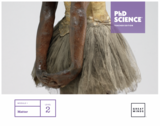
Throughout the module, students study the anchor phenomenon, birds building nests, and develop an answer to the Essential Question: Why do different kinds of birds use certain materials to build their nests? As students learn about each new concept, they revisit and refine a model that represents how to describe different materials and how birds use those materials to build their nests. At the end of the module, students use their knowledge of how matter can be described, classified, and used to explain the anchor phenomenon, and they apply these concepts to a new context in an End-of-Module Assessment. Through these experiences, students learn that understanding the properties of matter and the ways matter can change helps people use materials for specific purposes.
With PhD Science®, students explore science concepts through authentic phenomena and events—not fabricated versions—so students build concrete knowledge and solve real-world problems. Students drive the learning by asking questions, gathering evidence, developing models, and constructing explanations to demonstrate the new knowledge they’ve acquired. The coherent design of the curriculum across lessons, modules, and grade levels helps students use the concepts they’ve learned to build a deep understanding of science and set a firm foundation they’ll build on for years to come.
Cross-curricular connections are a core component within PhD Science. As an example, every module incorporates authentic texts and fine art to build knowledge and create additional accessible entry points to the topic of study.
Three-dimensional teaching and learning are at the heart of the curriculum. As students uncover Disciplinary Core Ideas by engaging in Science and Engineering Practices and applying the lens of Cross-Cutting Concepts, they move from reading about science to doing science.
© 2020–2022 Great Minds PBC. Except where otherwise noted, this content is published under Great Minds OER License 1 (greatminds.org/gm_oer_1). Use limited to noncommercial educational purposes. COMMERCIAL REPRODUCTION PROHIBITED.
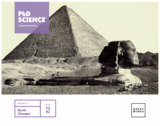
Throughout the module, students study the anchor phenomenon, the transformation of Surtsey, and build an answer to the Essential Question: How can the island of Surtsey change shape over time? As students learn about each new concept, they revisit and refine a model that represents the formation and transformation of Surtsey. At the end of the module, students use their knowledge of how land changes over time to explain the anchor phenomenon, and they apply these concepts to a new context in an End-of Module Assessment. Through these experiences, students develop an enduring understanding that natural events transform Earth’s land as time passes.
With PhD Science®, students explore science concepts through authentic phenomena and events—not fabricated versions—so students build concrete knowledge and solve real-world problems. Students drive the learning by asking questions, gathering evidence, developing models, and constructing explanations to demonstrate the new knowledge they’ve acquired. The coherent design of the curriculum across lessons, modules, and grade levels helps students use the concepts they’ve learned to build a deep understanding of science and set a firm foundation they’ll build on for years to come.
Cross-curricular connections are a core component within PhD Science. As an example, every module incorporates authentic texts and fine art to build knowledge and create additional accessible entry points to the topic of study.
Three-dimensional teaching and learning are at the heart of the curriculum. As students uncover Disciplinary Core Ideas by engaging in Science and Engineering Practices and applying the lens of Cross-Cutting Concepts, they move from reading about science to doing science.
© 2020–2022 Great Minds PBC. Except where otherwise noted, this content is published under Great Minds OER License 1 (greatminds.org/gm_oer_1). Use limited to noncommercial educational purposes. COMMERCIAL REPRODUCTION PROHIBITED.

Throughout the module, students study the anchor phenomenon, the cliff dwellings at Mesa Verde, and build an answer to the Essential Question: How did the cliff dwellings at Mesa Verde protect people from the weather? As students learn about each new concept, they develop and refine a model that represents a cliff dwelling and use that model to explore how cliff dwellings protected people from the weather. At the end of the module, students use their knowledge of weather to explain the anchor phenomenon, and they apply their learning to a new context in an End-of-Module Assessment. Through these experiences, students begin to establish an enduring understanding of weather and its effects. Specifically, students develop an understanding of the parts of weather, the effects weather has on people and their surroundings, and the ways people prepare for severe weather.
With PhD Science®, students explore science concepts through authentic phenomena and events—not fabricated versions—so students build concrete knowledge and solve real-world problems. Students drive the learning by asking questions, gathering evidence, developing models, and constructing explanations to demonstrate the new knowledge they’ve acquired. The coherent design of the curriculum across lessons, modules, and grade levels helps students use the concepts they’ve learned to build a deep understanding of science and set a firm foundation they’ll build on for years to come.
Cross-curricular connections are a core component within PhD Science. As an example, every module incorporates authentic texts and fine art to build knowledge and create additional accessible entry points to the topic of study.
Three-dimensional teaching and learning are at the heart of the curriculum. As students uncover Disciplinary Core Ideas by engaging in Science and Engineering Practices and applying the lens of Cross-Cutting Concepts, they move from reading about science to doing science.
© 2020–2022 Great Minds PBC. Except where otherwise noted, this content is published under Great Minds OER License 1 (greatminds.org/gm_oer_1). Use limited to noncommercial educational purposes. COMMERCIAL REPRODUCTION PROHIBITED.
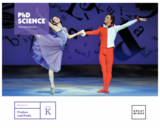
Throughout this module, students study the anchor phenomenon—tugboats moving cargo ships—and build an answer to the Essential Question: How do tugboats move cargo ships through a harbor? As students focus on two concepts, they build a model that represents the movement of tugboats and cargo ships through New York Harbor. Students develop an understanding of what makes objects start to move, how pushes and pulls can change the way objects move, and what happens when two objects bump into each other. By the end of the module, students use their knowledge of pushes and pulls to explain the anchor phenomenon, and they apply learned concepts to a new context in an End-of-Module Assessment. As a result of these experiences, students begin to develop an enduring understanding that pushes and pulls can start, stop, and redirect an object’s movement.
With PhD Science®, students explore science concepts through authentic phenomena and events—not fabricated versions—so students build concrete knowledge and solve real-world problems. Students drive the learning by asking questions, gathering evidence, developing models, and constructing explanations to demonstrate the new knowledge they’ve acquired. The coherent design of the curriculum across lessons, modules, and grade levels helps students use the concepts they’ve learned to build a deep understanding of science and set a firm foundation they’ll build on for years to come.
Cross-curricular connections are a core component within PhD Science. As an example, every module incorporates authentic texts and fine art to build knowledge and create additional accessible entry points to the topic of study.
Three-dimensional teaching and learning are at the heart of the curriculum. As students uncover Disciplinary Core Ideas by engaging in Science and Engineering Practices and applying the lens of Cross-Cutting Concepts, they move from reading about science to doing science.
© 2020–2022 Great Minds PBC. Except where otherwise noted, this content is published under Great Minds OER License 1 (greatminds.org/gm_oer_1). Use limited to noncommercial educational purposes. COMMERCIAL REPRODUCTION PROHIBITED.
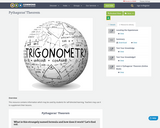
This resource contains information which may be used by students for self-directed learning. Teachers may use it to supplement their lessons.
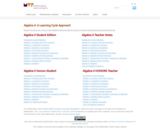
The Mathematics Vision Project (MVP) curriculum has been developed to realize the vision and goals of the New Core Standards of Mathematics. The Comprehensive Mathematics Instruction (CMI) framework is an integral part of the materials. You can read more about the CMI framework in the Utah Mathematics Teacher Journal. (UCTM, 2009)

The Mathematics Vision Project (MVP) curriculum has been developed to realize the vision and goals of the New Core Standards of Mathematics. The Comprehensive Mathematics Instruction (CMI) framework is an integral part of the materials. You can read more about the CMI framework in the Utah Mathematics Teacher Journal. (UCTM, 2009)
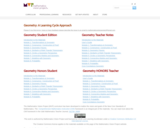
The Mathematics Vision Project (MVP) curriculum has been developed to realize the vision and goals of the New Core Standards of Mathematics. The Comprehensive Mathematics Instruction (CMI) framework is an integral part of the materials. You can read more about the CMI framework in the Utah Mathematics Teacher Journal. (UCTM, 2009)
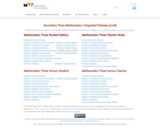
The Mathematics Vision Project (MVP) curriculum has been developed to realize the vision and goals of the New Core Standards of Mathematics. The Comprehensive Mathematics Instruction (CMI) framework is an integral part of the materials. You can read more about the CMI framework in the Utah Mathematics Teacher Journal. (UCTM, 2009)
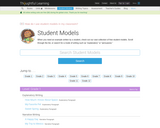
When you need an example written by a student, check out our vast collection of student models for grades 1-12. Search by grade level or mode of writing such as “explanatory,” “persuasive,” or "narrative."
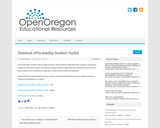
Materials that can be used to discuss actions that student groups can take to promote textbook affordability on campus. Includes PDF, Word, and slides.

The unit has two parts. In each, students dive into inquiry to answer the compelling questions:
1. Who are some of our closest tribal neighbors, and what have they been their lifeways since time immemorial?
2. Why do people explore, and how does this lead to expansion?
Part 1 is focused on the examination of the northwest and some of the original inhabitants. Through these questions students will learn about the culture of some of their closest tribal neighbors, the Spokane Indians. The final project for Part 1 is a cultural investigation display, in which students will show what they know about the culture of the Spokane Tribe.
In Part 2, Students will also learn about forces that brought change to the northwest: fur trade era and exploration. Students will ultimately learn about the Corps of Discovery and the Oregon Trail and know the impact each had on the west. Students will finish Part 2 with a timeline activity that will reflect choice and build upon student strengths according to their skill set.
Finally, a lesson on a Tribe of the Columbia Plateau is offered as an extension, but it is strongly recommended that students get to experience this lesson.
Note that the emphasis here is on the Spokane Tribe as one of our closest tribal neighbors. In no way is this an exhaustive study nor should the tribal cultures be generalized to other tribes of the region. We understand that each tribe in our region and North America was and continues to be unique in its culture, practices, lifeways, and traditions.
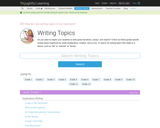
Do you want to inspire your students to write great narratives, essays, and reports? Check out these grade-specific writing topics organized by mode (explanatory, creative, and so on). Or search for writing topics that relate to a theme, such as “life” or “animals” or “family.”